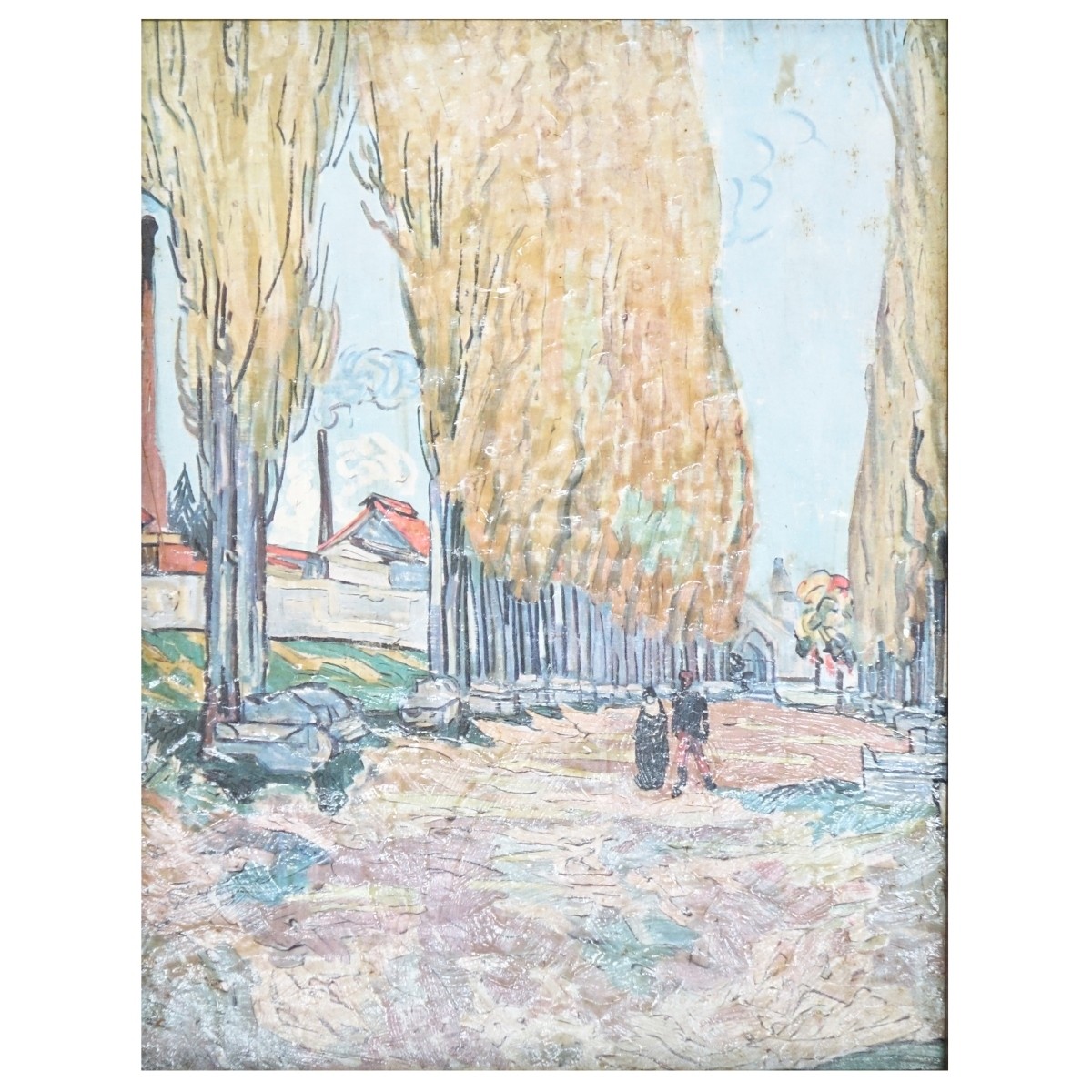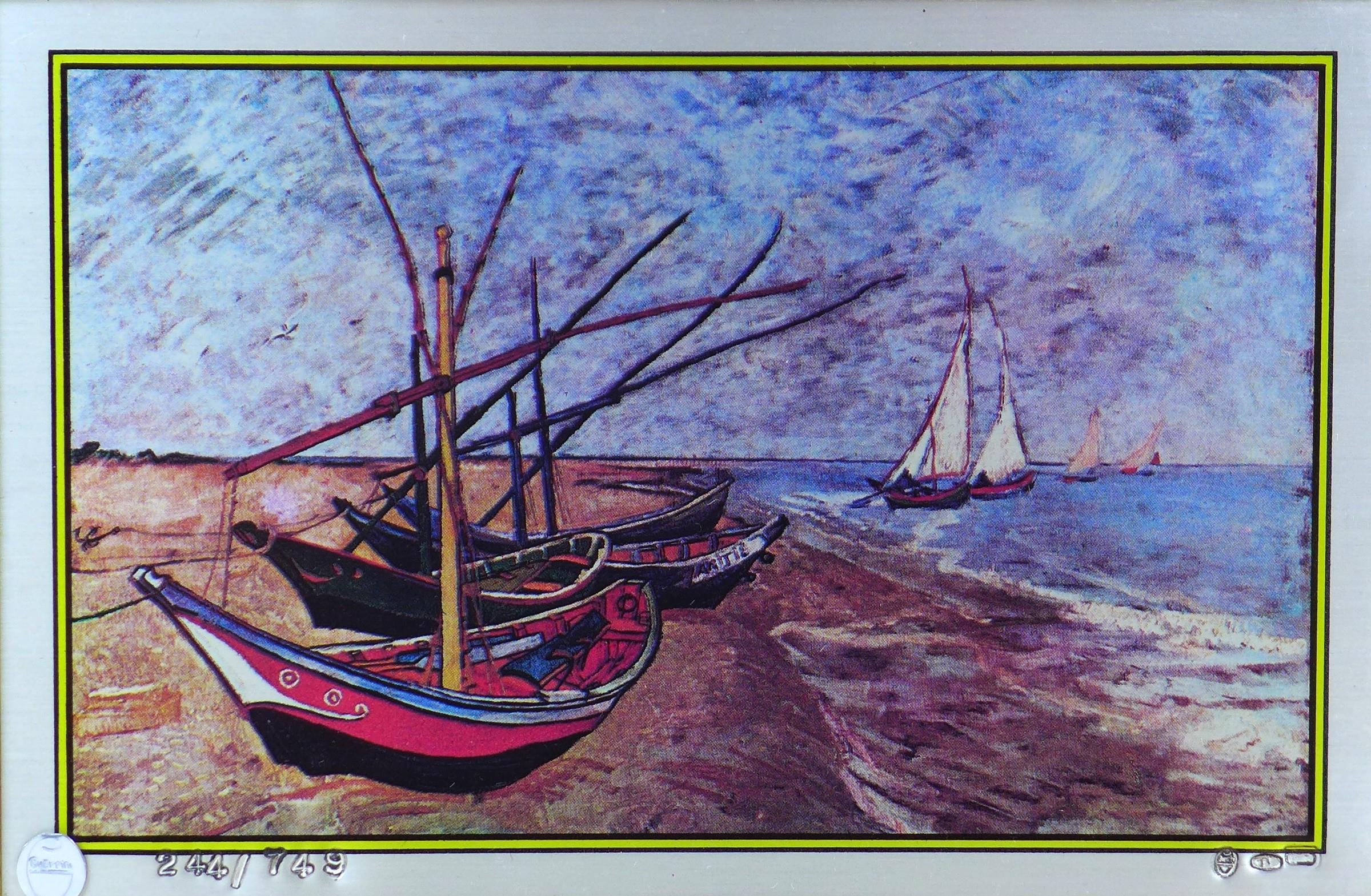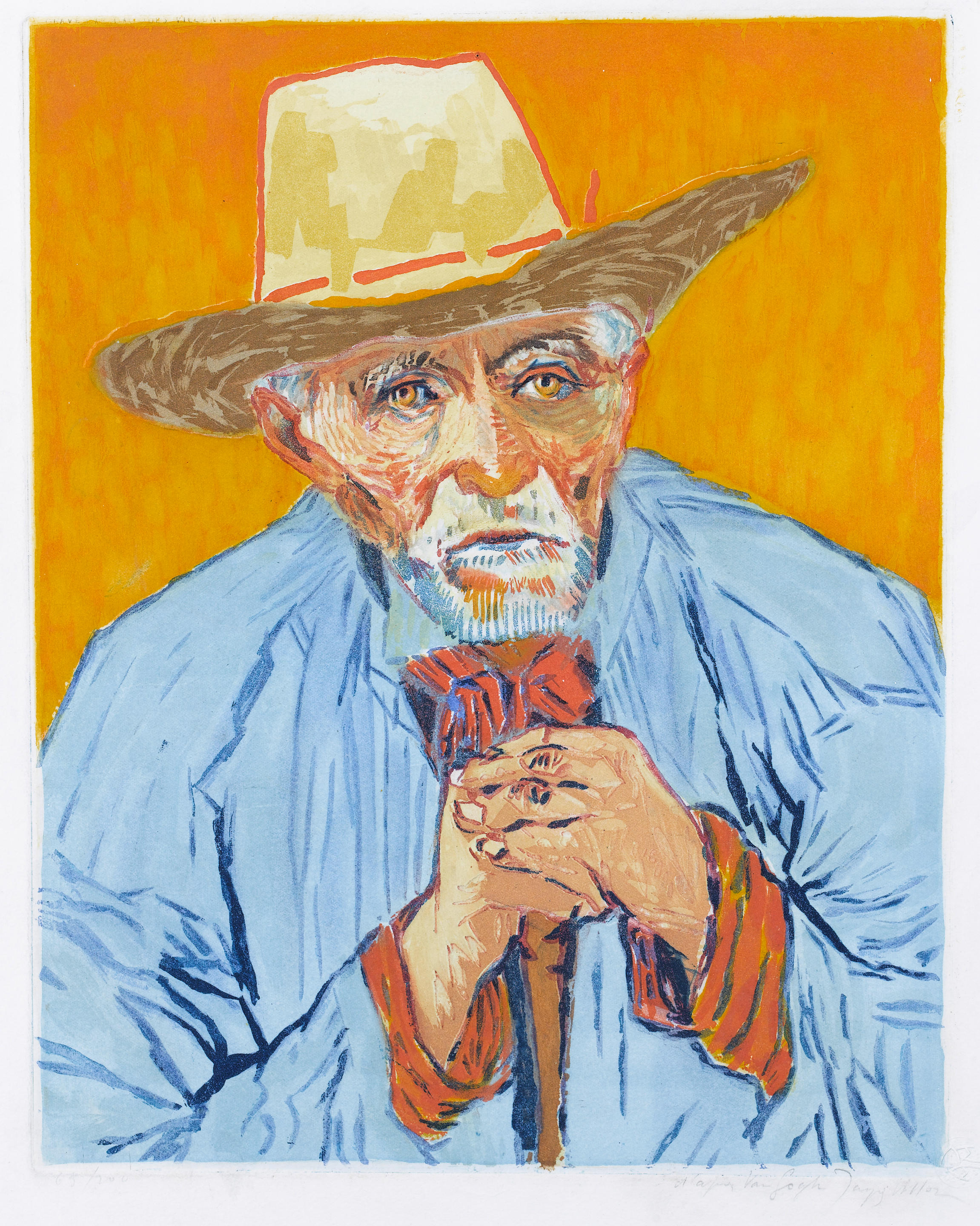Vincent van Gogh (Dutch, 1853–1890) Bald-Headed Orphan Man, Facing Right Signed 'Vincent' bottom right, pencil and black wash on paper Sheet size: 12 13/16 x 10 1/4 in. (32.5 x 26cm) Executed in January 1883. provenance: Collection of Dr. H.P. Bremmer, The Hague, the Netherlands. By descent in the family. E. J. van Wisselingh & Co., Amsterdam, the Netherlands. Acquired directly from the above in 1968. Private Collection, New York, New York. EXHIBITED: "Vincent van Gogh: Works from the Dutch Period," Avanti Galleries, Inc. New York, New York, October 19-December 16, 1995. LITERATURE: Jacob Baart de la Faille, The Works of Vincent van Gogh His Paintings and Drawings, Weidenfeld and Nicolson, London, 1970, no. F 955, p. 356 (illustrated as Bald-Headed Orphan Man Facing Right ). Jan Hulsker, The Complete van Gogh: Paintings, Drawings, Sketches, Harry N. Abrams, New York, 1980, no. 355, p. 85 (illustrated as Orphan Man, Bareheaded, Head ). Jacob Baart de la Faille, Vincent van Gogh The Complete Works on Paper, Catalogue Raisonné, A. Wofsy Fine Arts, San Francisco, 1992, Vol. I, no. 955, pp. 246-247 (illustrated in Vol. II, pl. XXXIII as Bald-Headed Orphan Man Facing Right ). Jan Hulsker, The New Complete van Gogh: Paintings, Drawings, Sketches, Meulenhoff, Amsterdam, 1996, no. 355, p. 85 (illustrated as Orphan Man, Bareheaded, Head ). NOTE: In December 1881, Vincent van Gogh left his hometown of Etten to settle in The Hague, southwest of the Netherlands. This sudden move followed a violent argument with the artist's family, who reproached his recent infatuation with his recently widowed cousin, Kee Vos, and looked down on his mediocre career, which they thought was bound to fail. Yet when he arrived in The Hague, then twenty-eight-year old van Gogh was full of hope and determined to prove his family wrong by succeeding as an independent artist. He rented a studio on the outskirts of the city and initially began collaborating with his relative Anton Mauve one of the leading artists of the Hague School. Rather soon thereafter however, the quick-tempered artist pushed his colleague away and ended up alone in a foreign town, without many means to survive. Undeterred, van Gogh continued to work on several projects with the same passion and optimism. He painted often in watercolor, and was encouraged by his brother to make substantial progress in oil painting. However, it was about this time that Vincent also discovered a passion for chalk and charcoal drawing, which he practiced extensively. His interest in black and white compositions was fueled by the numerous prints and illustrations he studied, and sometimes even collected, mostly from renowned British publications available in the Netherlands. Such prints were affordable and confirmed the artist's initial desire to sketch groups of popular figures, either outdoors or indoors, in the vein of Hubert von Herkomer Herkomer's Sunday at the Chelsea Hospital, an immensely popular print depicting an old war veteran slumped over dead (and later the subject of an acclaimed painting at the Royal Academy), was an important source of inspiration for van Gogh. Obsessed with drawing figures, the artist recruited models wherever he could, accosting strangers at train stations, and even seeking out people in soup kitchens, orphanages, and hospices. As the artist explained to his brother Theo, the task was an arduous one: "I have great trouble with models; I hunt for them, and when I find them, it is hard to get them to come to the studio; often they do not come at all" (Letter to Theo van Gogh, dated January 12-16, 1882). Fortunately, the artist's luck turned in September 1882, when he started looking for new models in the Dutch Reformed Old Men-and-Women's House located in Geest, on Om Bij Street. There, van Gogh discovered a seventy-two-year-old deaf pensioner named Adrianus Jacobus Zuyderland, who would become the artist's most frequent model, not only in the Hague, but throughout his entire
Vincent van Gogh (Dutch, 1853–1890) Bald-Headed Orphan Man, Facing Right Signed 'Vincent' bottom right, pencil and black wash on paper Sheet size: 12 13/16 x 10 1/4 in. (32.5 x 26cm) Executed in January 1883. provenance: Collection of Dr. H.P. Bremmer, The Hague, the Netherlands. By descent in the family. E. J. van Wisselingh & Co., Amsterdam, the Netherlands. Acquired directly from the above in 1968. Private Collection, New York, New York. EXHIBITED: "Vincent van Gogh: Works from the Dutch Period," Avanti Galleries, Inc. New York, New York, October 19-December 16, 1995. LITERATURE: Jacob Baart de la Faille, The Works of Vincent van Gogh His Paintings and Drawings, Weidenfeld and Nicolson, London, 1970, no. F 955, p. 356 (illustrated as Bald-Headed Orphan Man Facing Right ). Jan Hulsker, The Complete van Gogh: Paintings, Drawings, Sketches, Harry N. Abrams, New York, 1980, no. 355, p. 85 (illustrated as Orphan Man, Bareheaded, Head ). Jacob Baart de la Faille, Vincent van Gogh The Complete Works on Paper, Catalogue Raisonné, A. Wofsy Fine Arts, San Francisco, 1992, Vol. I, no. 955, pp. 246-247 (illustrated in Vol. II, pl. XXXIII as Bald-Headed Orphan Man Facing Right ). Jan Hulsker, The New Complete van Gogh: Paintings, Drawings, Sketches, Meulenhoff, Amsterdam, 1996, no. 355, p. 85 (illustrated as Orphan Man, Bareheaded, Head ). NOTE: In December 1881, Vincent van Gogh left his hometown of Etten to settle in The Hague, southwest of the Netherlands. This sudden move followed a violent argument with the artist's family, who reproached his recent infatuation with his recently widowed cousin, Kee Vos, and looked down on his mediocre career, which they thought was bound to fail. Yet when he arrived in The Hague, then twenty-eight-year old van Gogh was full of hope and determined to prove his family wrong by succeeding as an independent artist. He rented a studio on the outskirts of the city and initially began collaborating with his relative Anton Mauve one of the leading artists of the Hague School. Rather soon thereafter however, the quick-tempered artist pushed his colleague away and ended up alone in a foreign town, without many means to survive. Undeterred, van Gogh continued to work on several projects with the same passion and optimism. He painted often in watercolor, and was encouraged by his brother to make substantial progress in oil painting. However, it was about this time that Vincent also discovered a passion for chalk and charcoal drawing, which he practiced extensively. His interest in black and white compositions was fueled by the numerous prints and illustrations he studied, and sometimes even collected, mostly from renowned British publications available in the Netherlands. Such prints were affordable and confirmed the artist's initial desire to sketch groups of popular figures, either outdoors or indoors, in the vein of Hubert von Herkomer Herkomer's Sunday at the Chelsea Hospital, an immensely popular print depicting an old war veteran slumped over dead (and later the subject of an acclaimed painting at the Royal Academy), was an important source of inspiration for van Gogh. Obsessed with drawing figures, the artist recruited models wherever he could, accosting strangers at train stations, and even seeking out people in soup kitchens, orphanages, and hospices. As the artist explained to his brother Theo, the task was an arduous one: "I have great trouble with models; I hunt for them, and when I find them, it is hard to get them to come to the studio; often they do not come at all" (Letter to Theo van Gogh, dated January 12-16, 1882). Fortunately, the artist's luck turned in September 1882, when he started looking for new models in the Dutch Reformed Old Men-and-Women's House located in Geest, on Om Bij Street. There, van Gogh discovered a seventy-two-year-old deaf pensioner named Adrianus Jacobus Zuyderland, who would become the artist's most frequent model, not only in the Hague, but throughout his entire













Try LotSearch and its premium features for 7 days - without any costs!
Be notified automatically about new items in upcoming auctions.
Create an alert